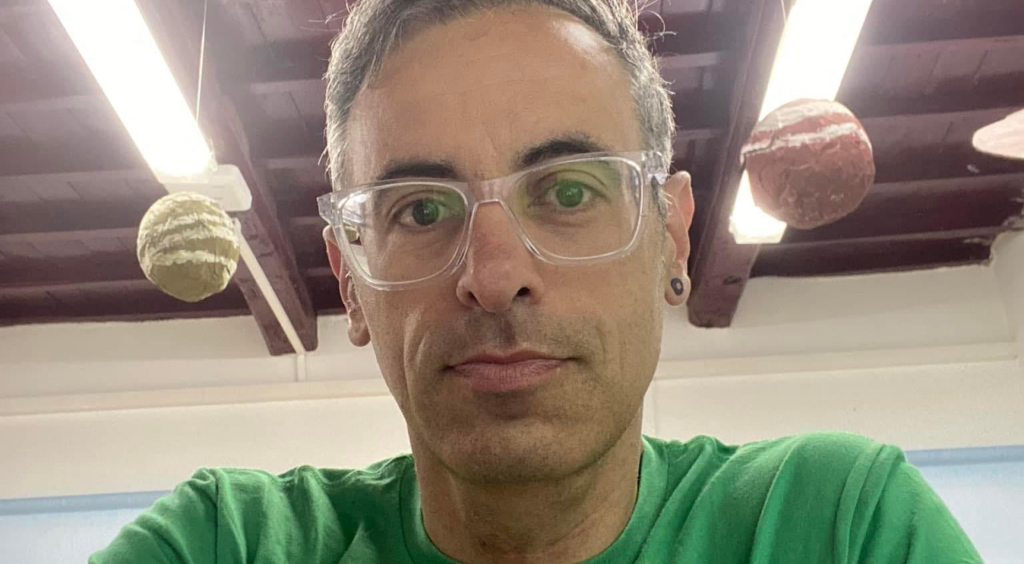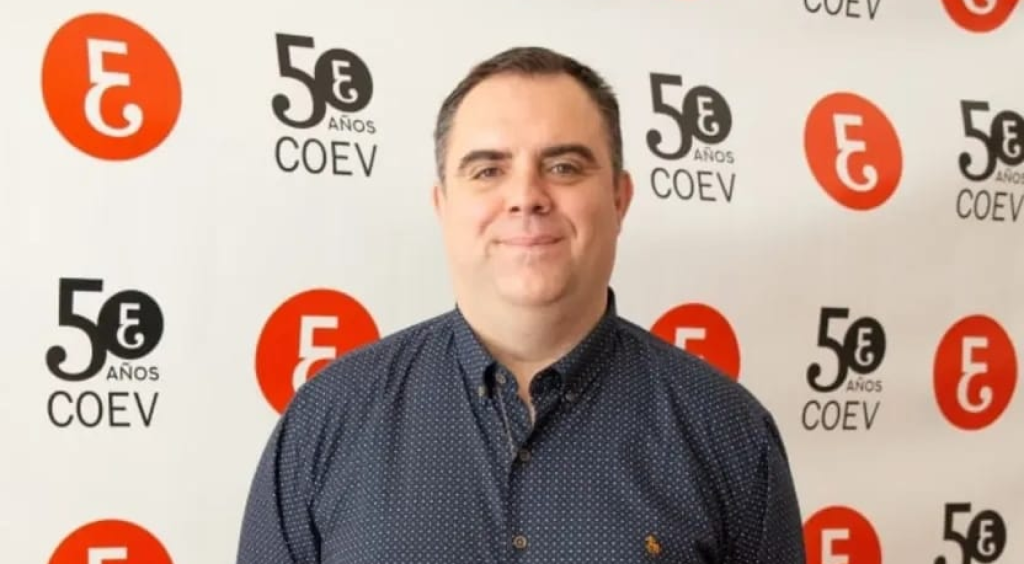Izaskun Gutiérrez has dedicated her whole life to teaching and inspiring her students from Secondary Education classrooms. Passionate about education and technology, and with a dynamic, deep, and humorous style, she combines her teaching work with training other professionals.
In addition to being a strong advocate for the conscious use of technology in the classroom, Izaskun is an Additio Certified Teacher and Innovator. She believes in sharing knowledge, in the power of the teaching network, and in the impact of well-used digital tools. In this interview, she opens the doors to her experience, her ideas, and her vision of the present and future of education.
Interested in learning more about other teachers’ experiences? Don’t miss the following interviews:
- Interview with Óskar Rodríguez, teacher and digital tools user
- Interview with Elio Jardón, teacher and head of studies who promotes the use of technology
- Interview with José David Vidal Soler, vocational training teacher and user of innovative technologies
1. Tell us a bit about yourself and your career as a teacher
I’m Izaskun Gutiérrez, and I teach at a “small” school with 2,400 students. I’ve been in the world of education since I was 19, and I’m now almost 55, so it’s been quite a few years already!
I teach at the school, I also give training sessions to teachers, and I direct musicals.
2. What levels and subjects are you currently teaching?
I’m usually in Secondary, although I’ve also taught in Primary. Lately, I’m very focused on first and second year of Secondary. The main subject I teach is Religion, although I also teach an elective subject on Critical and Independent Thinking.
3. What made you decide to become a teacher? What do you enjoy most about your work?
There wasn’t a specific moment that made me decide on this path. But as a child, I was very mischievous, and I think I was deeply impacted by the people who believed in me and gave me a chance… they shaped my future.
So, I thought that’s what I wanted to do too: help children and young people in whatever they might need. That’s why, for me, the role of tutor is super important. And as the years went by, I started seeing the imprint you leave on them, and that’s fulfilling.
I think it’s beautiful when you think they won’t remember you in the future, but they do—yes, they remember! So we teachers have a great power to influence, for better or for worse, so our role is essential. That’s what motivated me to go into teaching.
4. How would you define your teaching style in the classroom?
I’d define it as dynamic, deep, and broad. And with humor—humor is very important to me.
5. What role do you think technology plays in education today?
I always say in my training sessions that technology without pedagogy is just gadgets. So, what do I mean by that? For me, technology is just another means. It’s not everything, but a tool that helps and facilitates both bureaucratic tasks and methodology.
I think some tools help us work with young people both online and offline in class, and they offer things that the offline world sometimes doesn’t. But only if it serves me. I mean, if a tool isn’t useful for me, or I don’t understand what it’s for, then it’s useless.
It’s important not only to consider what technologies do, but also why we use them. If I’m clear about what I want to achieve, then I’ll look for tools that can help me achieve that.
6. What are the main challenges you see in the digitalization of education?
There are so many, I wouldn’t even know where to start. But let’s go.
One of the most important ones today is how we incorporate AI into education. When technologies first came into education, many of us were skeptical, but in the end we couldn’t look away, and we’ve ended up incorporating them into our daily lives. The same is going to happen with AI. Some want to prevent it from being established, but it’s here, and it’s just another tool that we’ll eventually have to accept and incorporate in some way.
Another big challenge is how to incorporate the human side into technology. That is, we need to apply ethics, reflect on the use we make of it, and invite our students to reflect as well.
7. Artificial intelligence is increasingly present in education. Have you integrated any AI tools in your teaching practice?
Yes, in our school we use Microsoft 365, so we have Copilot integrated. I use it a lot in training sessions, to generate content for rubrics, etc.
I think there are tools beyond ChatGPT that can be useful, and I’ve been experimenting, as I said, to generate rubric content, correct texts, adapt texts, etc.
But always with reflection, critical thinking, and knowledge of what I’m doing and why. Without that, it would be problematic.
8. Do you think AI can be beneficial if used correctly?
As long as we know why we want to use AI, it can be beneficial. That is, knowing the purpose and setting boundaries. And always keeping the human side, because AI can generate texts, songs, images, whatever you want—but it’s not going to generate your soul.
9. How did you discover Additio App? When and why did you start using Additio App in your daily routine?
It was love at first sight. I used to use other tools, but we needed something that we could share with colleagues, no matter what device each one had. Then I discovered Additio App, which had just been released at the time. I started playing around with it and thought: “This is powerful!”
So I’ve been using it almost since the beginning, and I’ve always had a close connection with you guys. I’ve sent suggestions for improvement, and you’ve implemented them. That’s why I couldn’t do without Additio App now.
Additio App helps me not only at the bureaucratic level but also in organizing the classroom. And now we’re about to start using Additio for Schools throughout the whole center, so we’re really excited to see how it will help us manage the whole school.
10. How has your classroom management changed since using the tool?
In the past, we used Excel or more manual methods, and now we can have everything in one app: planning, competencies, rubrics, sharing structures with colleagues, exporting content, doing self and peer assessments, generating reports, etc. And now with Additio for Schools, we’ll have everything—including communication with families—in one place.
Also, we use Microsoft Teams, and with its integration with Additio App, grades sync automatically, and for me, that’s just amazing.
11. What are the Additio App features you use the most and why?
I use almost everything! On a daily basis, I probably use rubrics and planning the most. And then, at the end of a term or school year, I use all the reporting, skills evaluation, etc.
And I think Magic Box is just awesome—it saves so much time.
But honestly, I use it all!
12. Evaluating according to the LOMLOE has been a challenge for many teachers. How do you use the app to promote skills-based assessment?
I was already working with skills and projects before, so I was comfortable with the LOMLOE. Integrating the curriculum into Additio App has made it much easier to evaluate with LOMLOE and to obtain skills reports that help you see performance in each skill and criterion.
13. If you could only take one Additio App feature with you to a desert island, which one would it be and why?
That’s like choosing between your mom and dad [laughs]. It would be hard to pick, but probably rubrics, self-assessment, and peer assessment.
14. What motivated you to become an Additio Certified Teacher?
Because when I like something, I go all in. And mainly because I saw it as the perfect complement to the training I was giving in other schools on planning and assessment.
15. As recognition for your involvement in the Additio App community, you’ve been offered the chance to be an Additio Certified Innovator. What does that mean to you?
I was really excited—I added the badge to my email signature right away [laughs]. I think it’s a way to appreciate the work teachers do. I also think it acknowledges my role in identifying teachers’ needs that can then be implemented to keep improving the tool.
16. You’ve participated in training sessions and webinars. What motivates you to share your experience with other teachers?
I believe in the network. If you have added value or an experience, it’s worth sharing it so that we can all improve. I’ve learned a lot from others, so I also try to share what I know.
17. If you could give one piece of advice to a new teacher starting in the classroom, what would it be?
I’d say: learn a lot, observe a lot, get inspired a lot, and get close to people you consider references. Today, we have many channels to learn: social media, YouTube channels… It’s important to learn from others, get inspired, and create your own style based on what you learn.
18. How do you imagine the future of assessment and teaching management with digital tools?
Phew, the future! It could be so many things… We can’t know what tools we’ll have or what we’ll have access to. What I would like is for technology to increasingly help students with difficulties, disabilities, or financial hardships. That it enables young people to be more autonomous and self-regulated.
Would you also like to improve your teaching practice, like Izaskun?
You can follow her advice by registering in Additio App with the individual plan for teachers. Or, if you think your school could benefit from the school plan, you can request a free demo:
And don’t forget to follow us on social media so you don’t miss anything: Facebook, Twitter, Instagram and Youtube 😉





